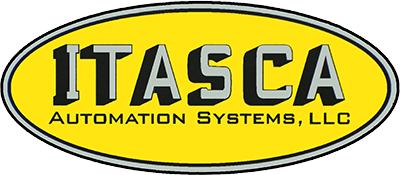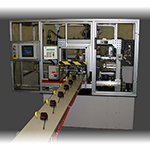In the world of manufacturing, advancements in technology have revolutionized various processes, and coil winding is no exception. Coil winding machines are critically important for numerous industries, including automotive, electronics, and aerospace sectors, where precision and efficiency are paramount. Over the years, these machines have undergone a remarkable transformation, transitioning from manual operation to highly automated systems. This blog will explore the fascinating journey of coil-winding machines and the benefits of embracing automation.
The Early Days: Manual Coil Winding
Before the introduction of automated machines, coil winding was predominantly a manual process. Skilled workers performed this intricate task by hand, using simple tools such as winding rods, mandrels, and counting frames. While manual winding required expert craftsmanship, it was incredibly time-consuming, prone to errors, and limited in terms of productivity and consistency.
The Rise of Semi-Automatic Coil Winding Machines
As technology advanced, semi-automatic coil winding machines made their debut. These early versions provided a significant improvement over manual winding. Operators still played a critical role but were assisted by machines that simplified the process. Semi-automatic machines introduced mechanisms to control the rotation, traverse, and tension of the winding wire, allowing for greater precision and efficiency. However, despite these advancements, human involvement remained integral to the operation, and productivity gains were modest.
The Birth of Fully Automated Coil Winding Machines
The true transformation of coil winding came with the advent of fully automated machines. These sophisticated systems have revolutionized the industry, delivering unparalleled precision, speed, and consistency.
Computer Numerical Control (CNC) Technology:
One of the most significant advancements in automation was the integration of CNC technology into coil-winding machines. By replacing manual controls with digitized programs and data input, CNC machines minimize human error and enhance accuracy. CNC systems allow for precise control of wire tension, traverse speed, and pitch, resulting in consistent dimensions and quality coils.
Programmability and Flexibility:
State-of-the-art coil winding machines offer extensive programmability. Operators can store complex winding patterns in the system’s memory, allowing for seamless transitions between different coil designs and production runs. This flexibility reduces downtime and significantly increases productivity, easily catering to diverse manufacturing requirements.
Advanced Material Handling Systems:
Fully automated machines excel not only in wire winding but also in material handling throughout the process. Innovative systems are capable of handling a wide range of materials, such as magnet wires, insulating tapes, and adhesive films. Integration of automated material handling allows for continuous, uninterrupted production and eliminates the need for manual intervention, reducing downtime and increasing efficiency.
Enhanced Quality Control:
Automated coil winding machines enable real-time monitoring and analysis of critical parameters during the winding process. This advanced quality control system minimizes defects and consistently ensures that coils meet precise specifications and required tolerances. Automatic fault detection and alarms further enhance quality assurance and reduce waste.
The Benefits of Automation in Coil Winding
The evolution from manual to fully automated coil winding machines has revolutionized manufacturing processes in countless industries. The benefits are extensive and impactful:
1) Improved Productivity: Automated machines achieve significantly higher production rates, reducing lead times and increasing output without sacrificing quality or precision.
2) Consistency and Repeatable Quality: Automation ensures consistent winding patterns, wire tension, and pitch, resulting in uniform coils of superior quality. These standards are maintained throughout the entire production run, eliminating variations caused by human error.
3) Cost Savings: Automation reduces labor costs associated with manual winding, maximizes material utilization, and minimizes scrap, resulting in substantial cost savings for manufacturers.
4) Enhanced Safety: By automating hazardous tasks, manufacturers can prioritize worker safety and reduce the risk of accidents in the production environment.
5) Scalability and Adaptability: Automated systems are highly scalable, enabling manufacturers to meet growing demands without significant investments in additional workforce or machines. They can easily handle various coil types and sizes, making them adaptable to changing production requirements.
Contact Us Today
At Itasca Automation Systems, we understand the critical importance of embracing automation in coil winding processes. As a leading provider of state-of-the-art winding machines, we offer a comprehensive range of fully automated solutions designed to revolutionize your manufacturing operations. With our expertise and cutting-edge technology, we ensure optimal productivity, precision, and unparalleled quality control for your coil winding needs.
Browse our website to explore our extensive range of coil-winding machines and discover how our solutions can streamline your manufacturing processes. Together, we can take your production capabilities to new heights with the power of automation.
The journey of coil winding machines from manual to automated has proved to be a game-changer for numerous industries. The advent of fully automated systems has brought about a paradigm shift in terms of productivity, precision, and quality control. By embracing automation in coil winding operations, manufacturers can unlock limitless potential while staying ahead of the competition in today’s fast-paced and demanding markets.




Comments are closed